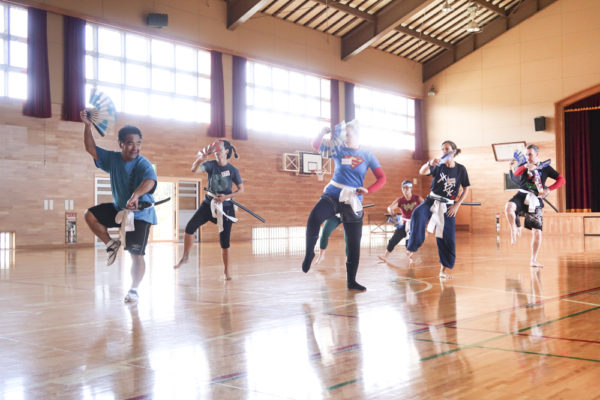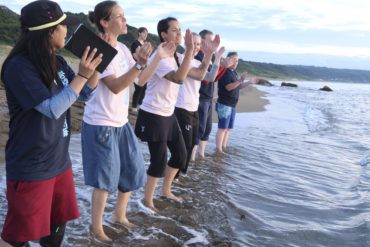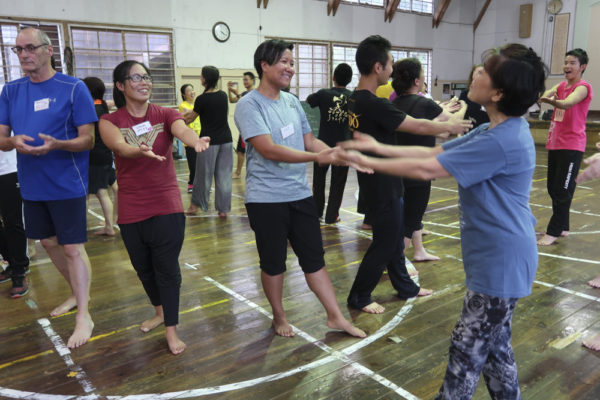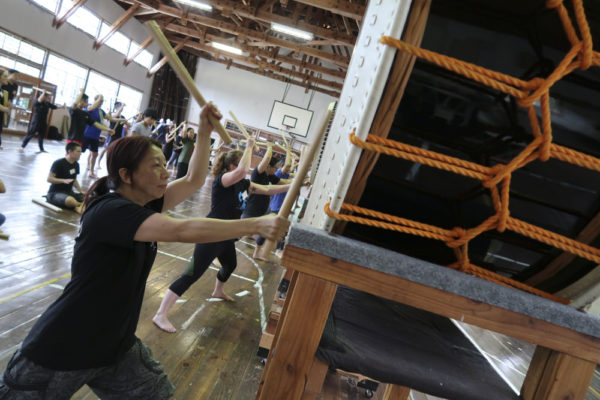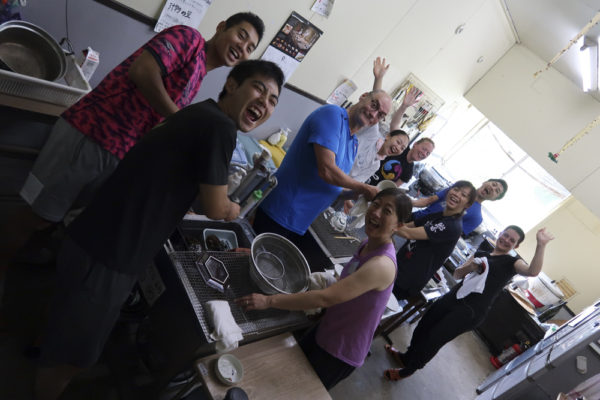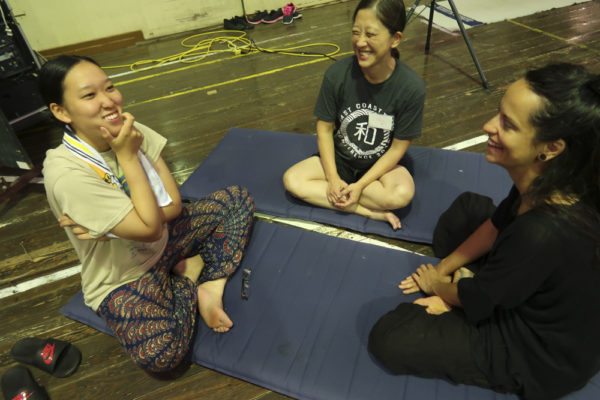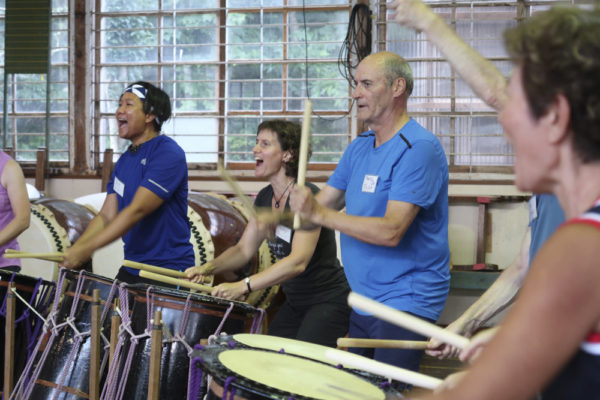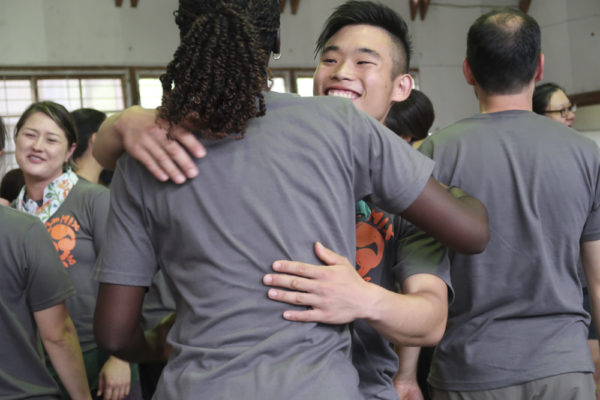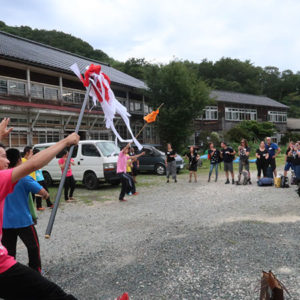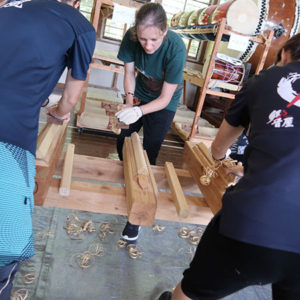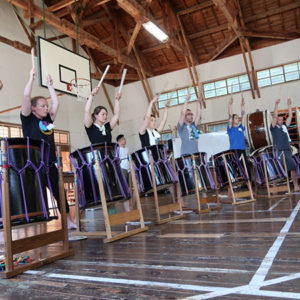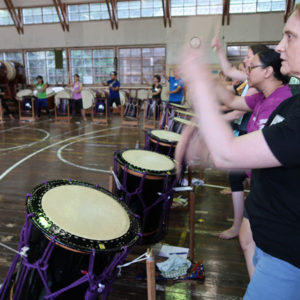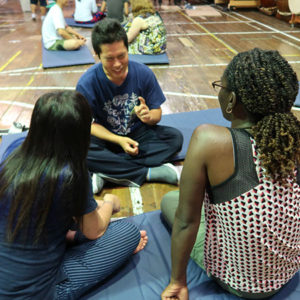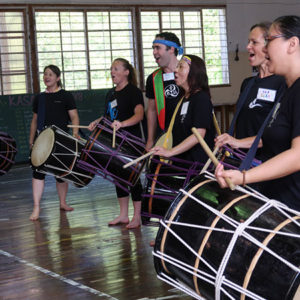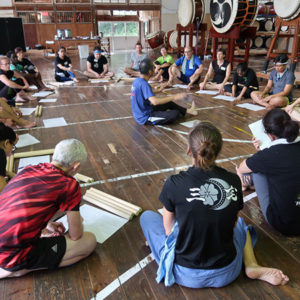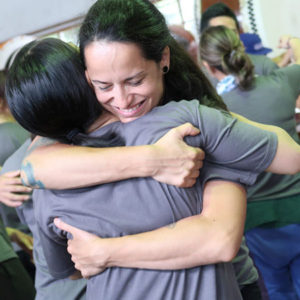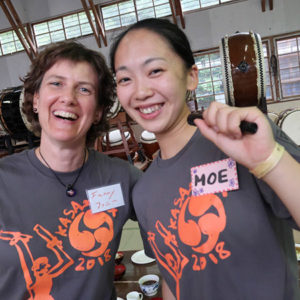“Sharing Taiko. Bonding Through Taiko.” by Taiyo Onoda
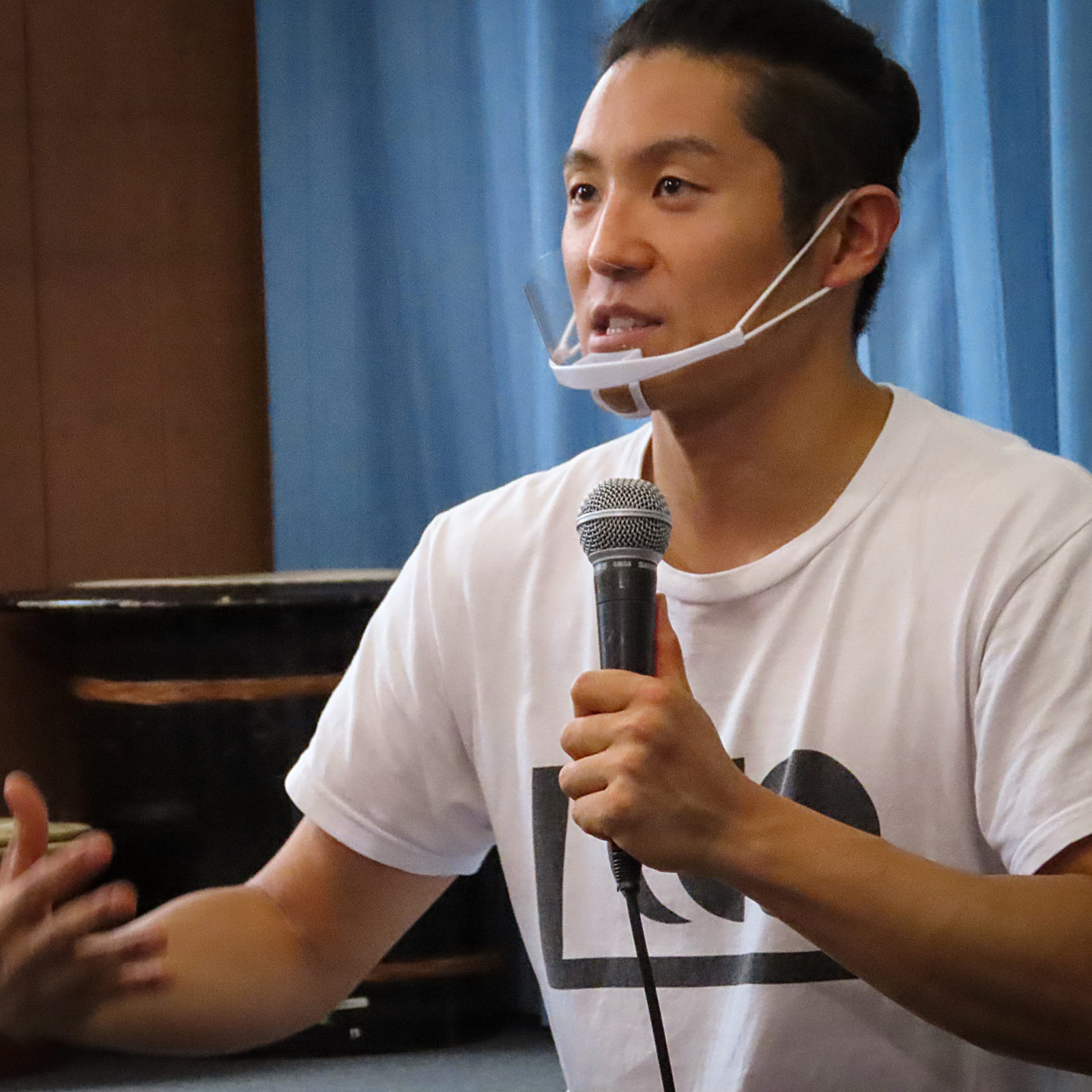
Almost a year has passed since the launch of Kodo Taiko School. This new initiative is an online school where Kodo performers share the skills and knowledge the ensemble has developed over the years. We conducted a trial course with Cohort 0 in 2021, and currently we are heading into the final lessons of the Cohort 1 course.
I initially felt out of place when I found myself in a teaching position at this early stage of my performing career. Already, I can honestly say that facilitating these courses has become one of the richest learning experiences of my lifetime.
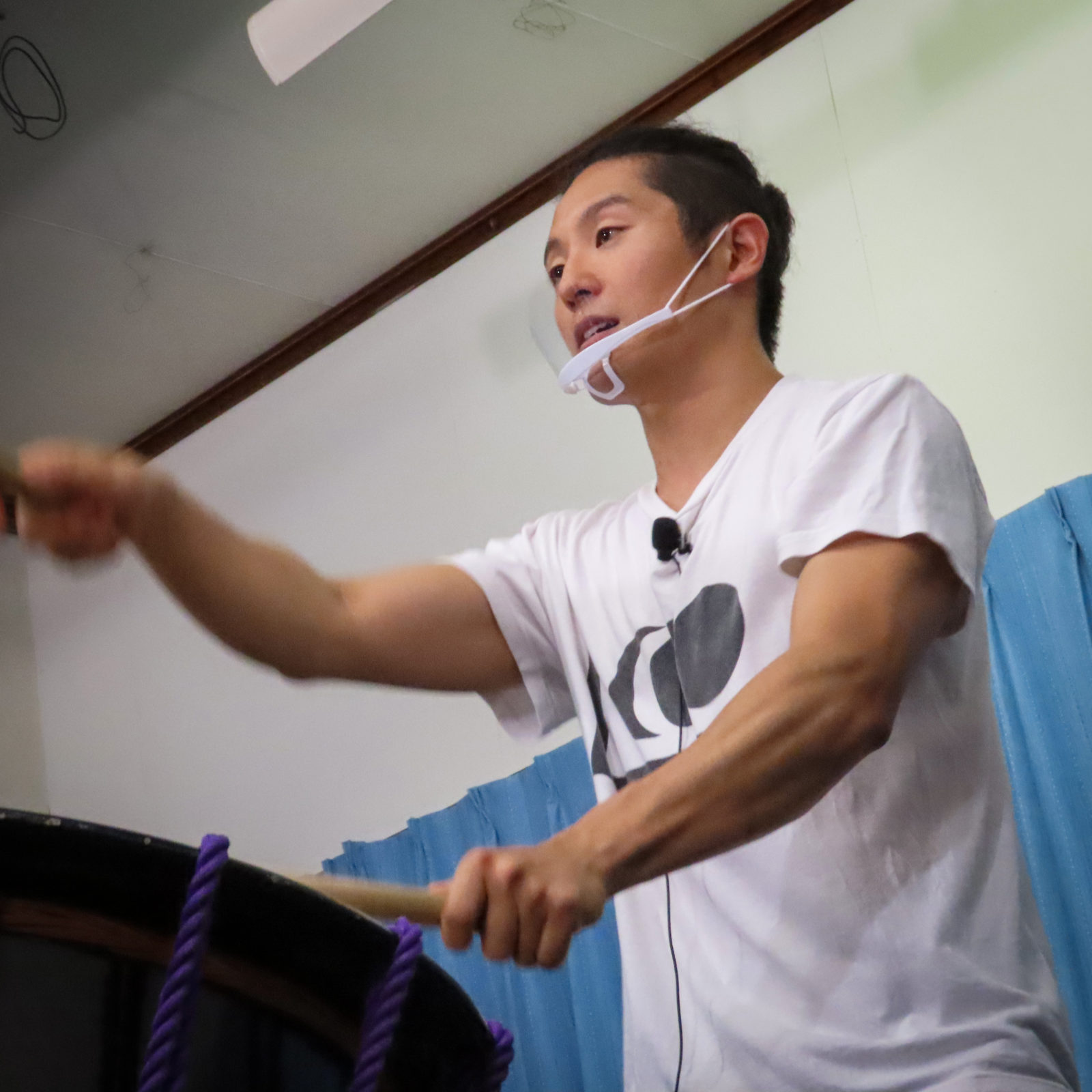
When the trial course began, it took a lot of time and effort for the Kodo Taiko School instructors, who are all Kodo performers, to come up with clear ways to explain what we experienced and gained through our training at Kodo Apprentice Centre. It’s challenging to put into words what we learned back then, and what we think and feel as performers now. Kodo doesn’t have a uniform kata (style of taiko playing, or set form), which made this challenge even more complex. At Kodo, we all strive to create the best sound possible. We acknowledge that everyone’s body is different, so we always keep in mind that how we play differs from person to person.
The instructor team approached this particular challenge by surveying a number of Kodo performers, and noting the similarities between us. In particular, we sought guidance from Eiichi Saito, the pioneer of Kodo-style workshops, and from Tomohiro Mitome, who frequently teaches taiko players within Kodo and from other teams. We also talked to various guest instructors who teach at Kodo Apprentice Centre and asked for their advice.
Our conclusion was that the Kodo method could be defined as the act of playing taiko in the most natural state possible. As Kodo members, it’s an individual quest to find our most natural state and to create the best sound possible. We strive to do that through our daily training.
Kodo Taiko School is a place where students can join us on that journey. Every lesson is led by a Kodo performer who explains things in their own unique way. Because we teach a course as a team, you get insight into a range of individual perspectives and approaches, all with the same end goal—achieving a natural state to create optimal sound. I think that’s one of the things that enriches our courses.
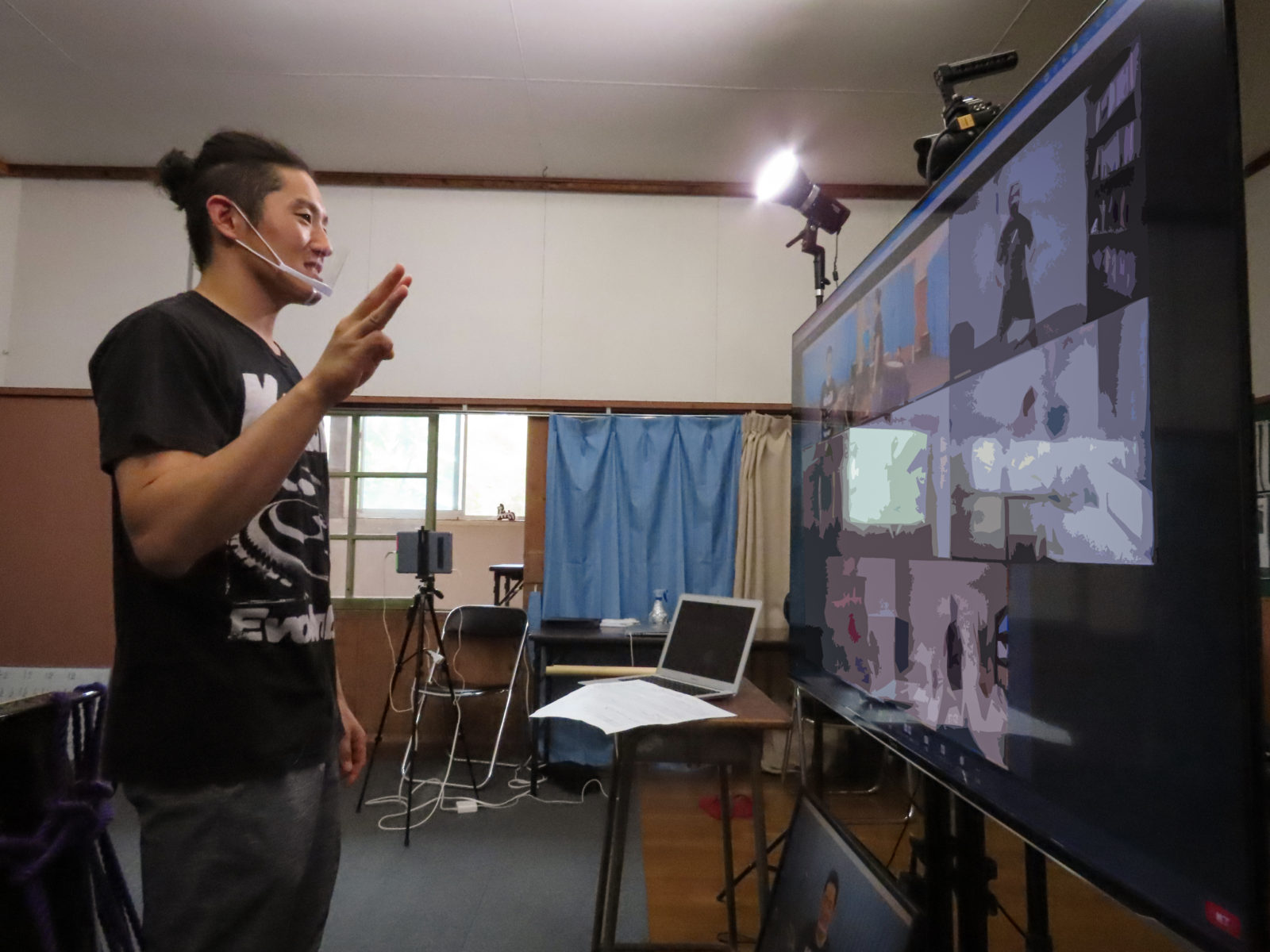
Teaching, in my own words.
I am a member of the instructing team, and I also double as an English interpreter for the lessons because I grew up in the United States. But I often struggle to find the right words. It’s hard to interpret Japanese terms and concepts that don’t have literal English translations, or will not make sense in English in a particular context. Especially on the spot.
For example, the first roadblock that every Japanese-English interpreter probably bumps into is “Yoroshiku onegai shimasu.” This common Japanese greeting can be literally translated into “best regards,” but in certain situations, it’ll mean “please share your knowledge and advice with us,” or “kindly do a favor for me,” or something else.
Here’s another example. In Japanese, futokoro is a word that explains the space in front of your chest. But it’s more than a word; it’s a concept that changes depending on the activity you’re doing. So it’s different for martial arts, tea ceremony, and taiko. Trying to explain it in one word in English isn’t possible. I needed way more words each time.
(Side Note: I wrote this blog in Japanese first without considering the difficulty of translating into English. The struggle is real…)
With each passing week, I learned how to explain things better. Interpreting for the senior members allowed me to process their thoughts in my mind twice; once in Japanese and again while I was searching for the right English. While listening to their explanations, I drew on my own knowledge and experiences to find the words I needed.

Interpreting for Cohort 0 Guest Instructor Eiichi Saito

Interpreting for Cohort 1 Guest Instructor Tomohiro Mitome as he explains how to apply the fundamentals of taiko playing to Odaiko (big drum) playing.
But there were still things that I just couldn’t explain concisely. Not just while I was interpreting, but when I was teaching as well. I eventually realized that I had trouble explaining certain concepts, simply because I didn’t know enough about them. A wise man once said, “if you can’t explain something simply, you don’t understand it well enough.” This quote hit home. Lesson learned.

With Instructor Team Leader Yoshie Abe. We’re working hard to forge meaningful connections with all the students.

With Shogo Komatsuzaki, talking about physical conditioning. At Kodo Taiko School, all the instructors perform on the Kodo stage, so you get to hear practical advice from a performer’s point of view.
For me, getting to experience how the senior members approach and explain this art form firsthand is really inspiring. When I interpret for my fellow instructors, it feels like a VIP experience because I get the chance to go inside their head and take a peek at their way of life, through their eyes. I feel so lucky to have this chance.
This chance comes with a sense of responsibility. I believe it is my duty to share their experience as accurately as possible with taiko enthusiasts all around the world.
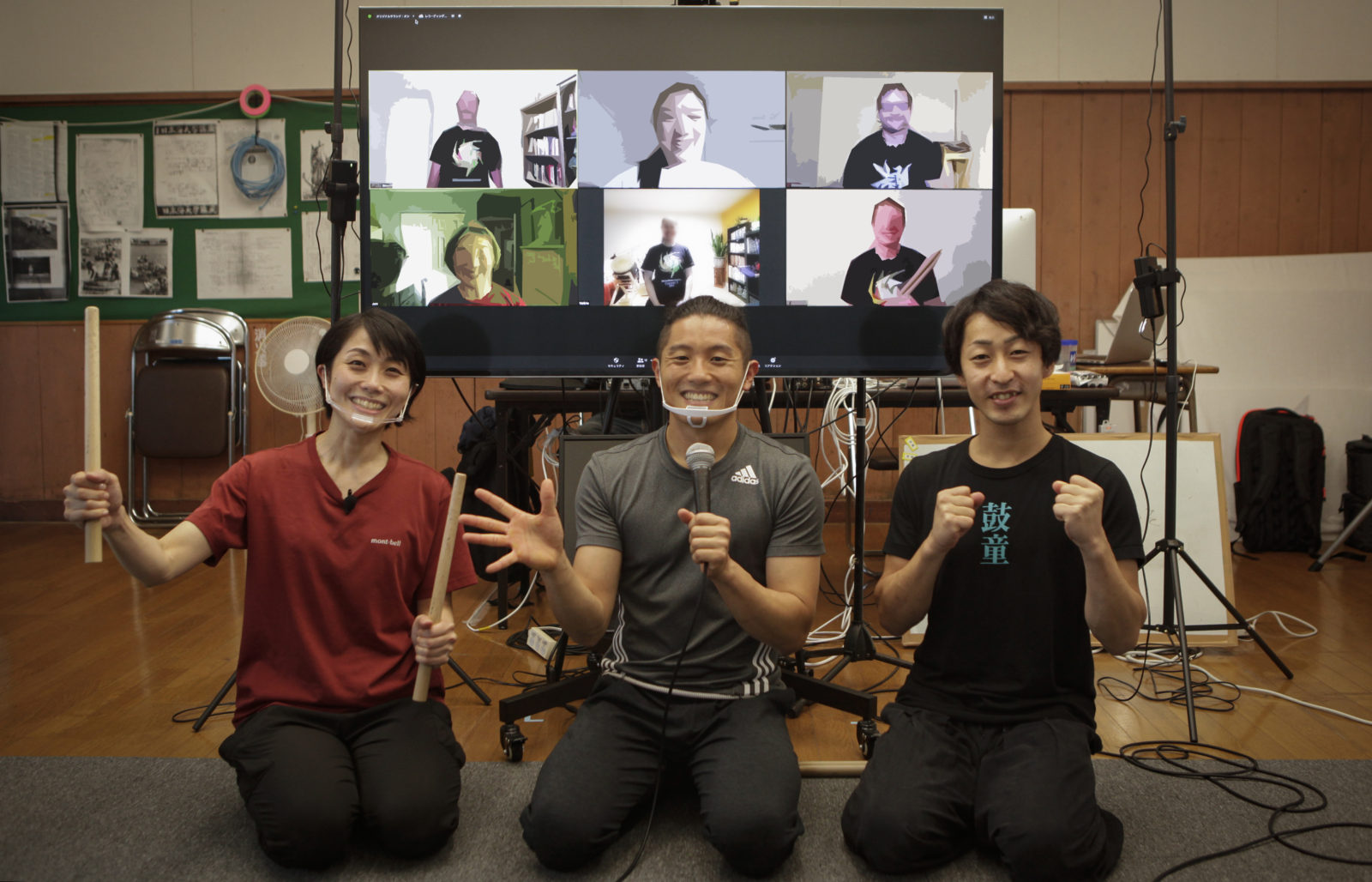
Yoshie Abe (left) and Jun Jidai (right) will be Cohort 2 instructors, too. Join them and participants from around the world! Cohort 2 starts in May 2022.
Cohort 2 of Kodo Taiko School will begin in May 2022. During this course, I am scheduled to be touring Japan, so I won’t be able to participate in the same way as I have to date. Instead, I’ll be on stage, giving it my all and making most of what I learned through Cohort 0 & 1.
Kodo Taiko School alumni: I hope you’ll come to the theater so we can meet up in person. If you can join us, see you soon!
Kodo Taiko School future students: It will be one of the richest taiko experiences of your life, guaranteed. I’m looking forward to hearing how you get on!

Kodo Taiko School – Online Information Sessions (Pre-Cohort 2)





